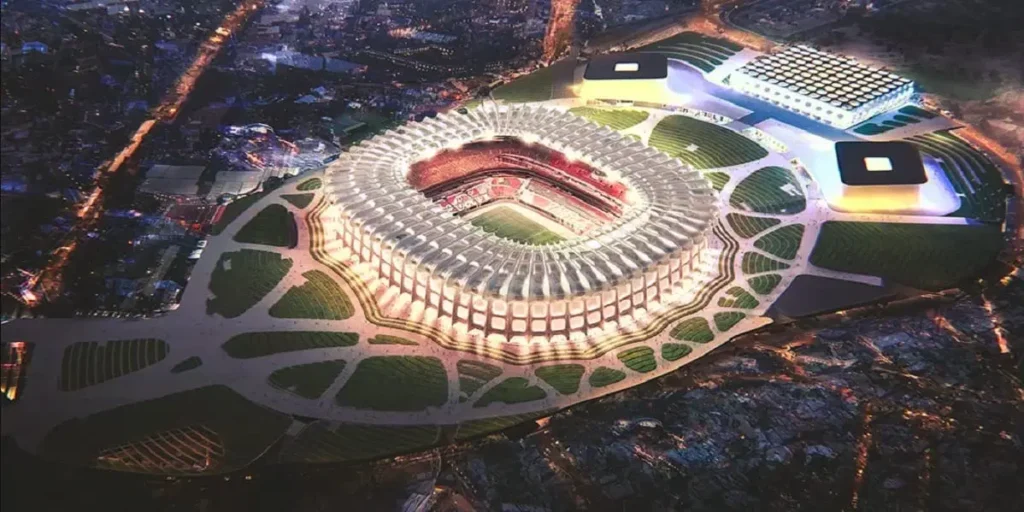
Introduction
As the 2026 FIFA World Cup approaches, Mexico’s Estadio Azteca is undergoing significant renovations to meet modern standards and enhance the fan experience. Scheduled to host the opening match, the iconic stadium is set to reopen on March 26, 2026, 75 days before the tournament’s commencement.
Renaming and Funding
In a strategic move to finance the renovations, the stadium has been renamed Estadio Banorte, following a partnership with the Mexican bank Banorte. The agreement includes a 2.1 billion pesos ($105 million) loan, with Banorte acquiring naming rights and promotional opportunities within the venue.
Infrastructure Enhancements
The renovation plans focus on improving various aspects of the stadium’s infrastructure:
- Seating Capacity: The stadium’s capacity will be increased from 83,264 to 90,000 seats.
- Pitch Upgrade: A hybrid pitch system will be installed, featuring a new ventilation and suction system to ensure better recovery and stability.
- Locker Rooms: New locker rooms will be centrally located beneath the luxury boxes, with a direct tunnel leading to the pitch.
- Fan Amenities: The stadium will feature modernized restrooms, expanded hospitality zones, and improved entry points for enhanced fan comfort.
- Media Facilities: Upgraded press areas and a new sound system will be installed to accommodate media personnel and improve audio-visual experiences.
Technological Upgrades
To provide an immersive experience, the stadium will incorporate advanced technology:
- LED Screens: Approximately 2,000 square meters of LED screens will be installed on the stadium’s exterior, with additional high-definition screens inside.
- Surround Sound System: A modernized audio system will enhance the auditory experience for fans.
- Security Measures: A 200-unit CCTV surveillance system will be implemented to ensure safety and security during events.
Community Engagement and Legacy
The renovations aim to preserve the stadium’s historical essence while modernizing its facilities. Local residents have expressed concerns over the project’s impact, particularly regarding infrastructure improvements in surrounding areas. The city government has pledged over six billion pesos in investments to address these concerns and ensure a positive legacy for the community.
Conclusion
The ongoing renovations at Estadio Azteca signify Mexico’s commitment to hosting a world-class FIFA World Cup in 2026. By modernizing its facilities and infrastructure, the stadium aims to provide an exceptional experience for players, media, and fans alike. As the tournament approaches, the revamped Estadio Azteca is poised to continue its legacy as a premier venue in international football.




































Leave a Reply